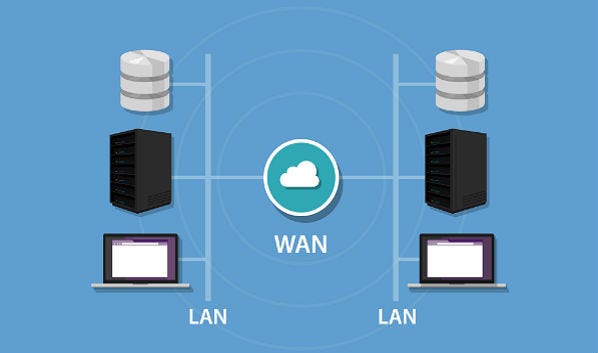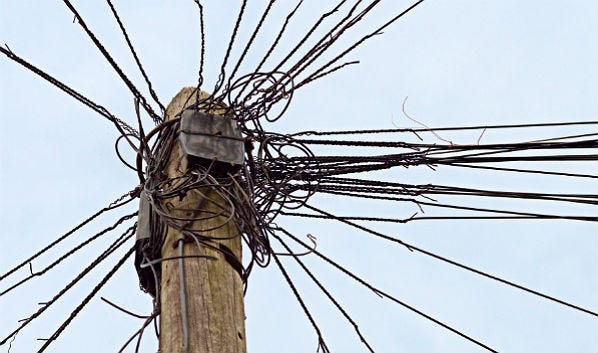12 Ways an All-Internet SD-WAN Thumps MPLS12 Ways an All-Internet SD-WAN Thumps MPLS
If you aren’t selling software-defined WAN, you – and your customers – are already behind. Here’s why and how to make the business case, according to C3's Matthew Toth.
March 6, 2017

Already have an account?
12 Ways an All-Internet SD-WAN Thumps MPLS
By Matthew Toth
Here’s the message I’m sending customers:
Dear CIO or IT director,
Stop buying MPLS. Right now. Don’t spend the next three-year contract cycle “letting it shake out.” Start evaluating dual-internet SD-WAN solutions, and realize that advances in internet-only SD-WANs may mean you can eliminate MPLS as a transport method from your WAN.
Are you delivering a similar message?
If not, it may be because you don’t have the business case in a form digestible by line-of-business leaders. You’ve read technical viewpoints from the likes of Aryaka, Talari Networks, VeloCloud and Ecessa on why to make the change. The problem is that they’re written for engineers and gearheads, by engineers and gearheads. Yes, all of the following are true:
SD-WAN ensures better network uptime using multiple data circuits (preferably internet, in my opinion) and orchestration/automation;
QoS is possible utilizing multiple internet connections, it’s just done differently than your typical MPLS network;
Automation/orchestration of network management becomes incredibly simple compared with needing a CCIE’s assistance for complex routing changes and management; and
SD-WANs are faster networks because of the more efficient use of bandwidth among multiple circuits.
I’m now going to give you the non-technical case for SD-WAN that you can take with you when calling on business leaders. Ready?
Matthew Toth is founder and lead consultant at Collaborative Communications Consulting (C3).
#1: It’s Cloud Native

SD-WAN was built with the cloud in mind. Of the future applications your organization deploys, how many will be cloud-hosted? SD-WAN engineers slaved over the question of how to make their solutions work as seamlessly as possible with the likes of AWS, Azure, Salesforce, Office 365 and other cloud services yet to be invented.
MPLS was created 15 years ago, and retrofitting this technology for the cloud is the equivalent to buying a tape converter so that you can use the 8-track player in your car. You can make it work, but who are you kidding?
A humorous and entirely true story: An existing C3 client inquired with one of the household MPLS providers on how to provision ExpressRoute to Azure into its MPLS network. The MPLS engineer replied with, “I don’t know, but I’ll ask my manager.” He asked his area engineer manager, who replied with, “I don’t know, but you know who does? Bill. Bill in Philadelphia knows.”
Are you kidding me? Big Telco has one guy who knows how ExpressRoute integrates into its MPLS network? Would you have confidence in this carrier if you placed an order for ExpressRoute to that MPLS network?
#2: More Bandwidth

When you depend on an MPLS network, someone has to be the bandwidth police. Do you enjoy having to rate-limit certain applications? Are you improving morale and making employees love IT every time you have to hunt down the millennial who is streaming Pandora?
I didn’t think so.
#3: More Access Options

When you buy MPLS, you are limited to buying that service using only the local loops (fiber, T1s, EoC) that the MPLS carrier has access to. Want to run MPLS on Google Fiber? Nope. The local ISP fiber that runs in front of your building? Nope. Fixed wireless? Nope.
With SD-WAN, plug in any kind of internet connection and go. Access options are plentiful. This a) keeps costs down, and b) allows you to create a more diverse, less disaster-prone network using those varied access methods.
#4: Innovation

Beyond just bolting on SD-WAN, MPLS isn’t going to see much more innovation. In contrast, SD-WAN competitors are at one another’s throats, vying for talent in an effort to release more functionality, improve customer portals and come up with the next killer feature.
SD-WAN will see more innovation in the next four months than the next 10 years of MPLS. With SD-WAN, your applications and future WAN structure are future-proofed.
#5: Support

Remember the days of MPLS NOCs calling you back every hour with an update on service issues? Do you get those anymore? Probably not.
For international MPLS users today: Have you ever been blown away by the support you get on an international MPLS outage ticket? No? Do you know why? Because Big Telco is big and bureaucratic. To that, add a time-zone difference with wherever your international locations are. On top of that, your MPLS provider probably has to interconnect with a regional transport player, like Colt in Europe or Level 3 in South America, in addition to the local loop provider (whose NOC employees barely speak English).
Add in their bureaucracies and systems as impediments to getting a resolution on your ticket. Do you now understand why updates on your outages take hours, sometimes days?
I had a conversation with a large MPLS client’s infrastructure manager, the guy who handles trouble tickets. We talked about potentially moving from MPLS to SD-WAN over multiple internet circuits, and the idea was attractive to him for one primary reason: “When I call Big Telco for an international outage, I get the runaround endlessly. If I have a local internet circuit go down somewhere internationally, I call my local plant contact and tell him to call the local ISP. My problems are always solved quicker with the local ISP.”
#6: U.S. ISPs Have U.S. NOCs

More and more of the large U.S.-based MPLS carriers are using overseas NOCs. Let’s face it, that can make communication difficult.
Regional ISPs – with virtually no exceptions – use domestically staffed NOCs.
#7: Better Quality

QoS on MPLS requires two components: proper LAN/router configurations and proper queue designation with the MPLS carrier. As your applications have changed, and as you’ve swapped routers out, have you kept up with how these two factors are married? Probably not.
QoS on SD-WAN requires one component: your SD-WAN equipment. If I need to make a change, I make it on my network. I don’t need to create a ticket with Big Telco and wait the requisite one week to four months to make the change.
#8: More for Less

Private-network bandwidth is typically much more expensive than internet bandwidth. As an example, I typically find that two internet circuits – one fiber and one coax – are less expensive than a single fiber MPLS circuit. Use those savings as part of the fund for buying SD-WAN devices.
Internationally, this price delta become even greater. A client of ours in Italy was just quoted $4,100 for a 10 Mbps MPLS connection, while a 100 Mbps internet connection with a regional ISP was $2,260.
#9: Ease of Future Network Changes

Many MPLS customers are scared to death to change out their MPLS networks. Besides the risk of downtime, the process can tie up resources internally as employees manage the change to another provider or another technology.
With SD-WAN, changes are so much simpler. An SD-WAN uses two active circuits, and they can accept internet services from any carrier, so changing out one circuit per site isn’t so harrowing. Routing is automated, so just pull one circuit out and put another in.
Yes, it’s a little more complicated than that, but not much.
#10: Ease of Doing Business

It’s much more pleasant to do business with regional ISPs than Big Telco. C3, the company I founded, sells 150+ internet and MPLS providers globally. Want to know a dirty little secret? The ease of doing business with any given network provider comes down to three factors, in descending importance:
3. The size of the carrier;
2. The number of mergers and acquisitions the company has undergone; and
1. The sheer number of distinct product types offered.
The lesser and smaller of the above, the easier that company is to do business with. (One caveat: The smaller carrier must have a proven track record, stability and decent peering to be used in an SD-WAN network.)
The large carriers have built their networks and systems by cobbling together acquired assets — read: large MPLS providers. Their bureaucracies are based on the systems integrations needed to make everything work together. Being a veteran of these companies, I can tell you firsthand: This integration is really, really hard. There are systems integrations, culture integrations, product integrations, R&D integrations, and just plain ol’ people integrations.
Big Telco CEOs wake up in the morning and think to themselves, “How can I sell more cellphone plans, TV services or stop the next union strike before it starts?”
Smaller, nimbler regional carrier CEOs wake up and think, “How can I be a better ISP?”
The fact is, those small companies live and die by their reputations. They also have the luxury of focusing on a smaller product set. The priorities that keep the CEO up at night are the ones that get attention and funding. What are the priorities of your network providers?
#11: Account Rep Turnover Is a Pain

If you have MPLS, then there’s a decent shot you have it through one of the Big Telcos. Tell me: Exactly how often do you get a new sales rep? Can you have an effective relationship with a carrier when you have a new sales guy once per year? Does this sound familiar?
#12: Recommendations

If you really feel the need to keep MPLS, consider the following:
Use a service like Aryaka, where internet can be used like a local loop to a private-core network. This is a unique offering, unlike virtually anything in the market, that also includes WAN acceleration natively.
Buy smaller increments of MPLS as it relates to the bandwidth size of the complimentary internet circuit, and use the MPLS link primarily for voice and video.
Some SD-WAN providers have suggested that managing the multitude of internet providers can be challenging. If you feel that this is the case, then we can recommend two courses of action:
Use an aggregator that can provide one bill and one NOC for many underlying ISPs.
Use a firm like mine to negotiate prices, manage contracts and continually research ISP options on your behalf. There’s no need to be calling telecom carrier 800 numbers and talking to dozens of salespeople globally.
One last piece of advice for SD-WAN buyers: You now have the tools to easily measure end-to-end performance, comprised of latency, jitter, bandwidth and packet loss, across multiple ISPs — and MPLS providers if you decide to keep it. That means you can continually enhance the performance of your network by replacing low-performing circuits, identified through these continual measurements. You may find that, although an internet circuit for your Dallas office may be sold as a 100 Mbps, your application performance over this link suffers because of the peering relationships (or lack thereof) of that provider.
You may also find, as it has been noted by the SD-WAN experts at Packet Pushers, that you’ll often find the end-to-end performance of regular, everyday internet outperforms MPLS on a circuit-to-circuit basis, on a straight-up comparison.
In summary, SD-WAN is the clear-cut choice for the future of your WAN. Consider an all-internet SD-WAN for the ultimate in performance, flexibility and price, and use MPLS sparingly.
12 Ways an All-Internet SD-WAN Thumps MPLS
Please click here for more Channel Partners galleries.
Read more about:
AgentsAbout the Author
You May Also Like


